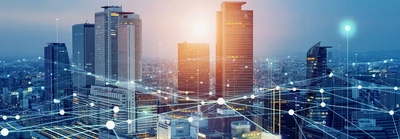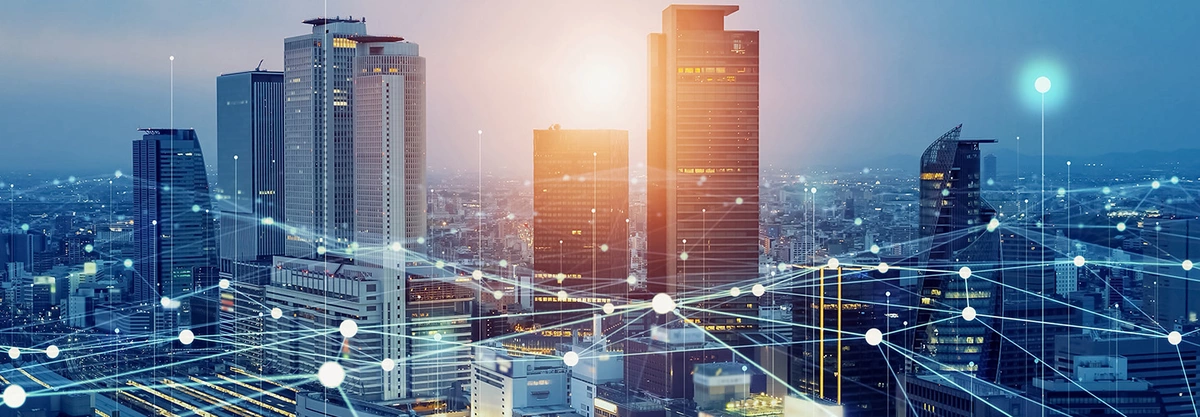Optimizing Your Business with User Authentication Data


The Age of Digital Transformation
We’re living in the age of Smart: Smart Cities, Smart Buildings, Smart Factories and Smart Offices, to name a few. These connected environments are powered by innovations in cloud computing, sensor technology, data analytics and artificial intelligence (AI)—all enabled by secure and reliable user authentication. A unified authentication and access control system not only secures physical and digital assets but also generates valuable data that can be used to optimize and transform your business.
Technology advancement continues to accelerate.
- Internet of Things (IoT) and Industrial Internet of Things (IIoT) devices have proliferated over the last decade, enabling our devices to talk to us and to each other from anywhere.
- “Big Data” analytical methods transform masses of data into insights to drive better decision making and performance.
- Everything seems to be on the cloud—and cloud computing is now evolving into multi-cloud solutions that integrate seamlessly with each other.
- More businesses are venturing into the metaverse with virtual experiences and services that bring people together and enable new business models and modes of interaction.
With recent advances in AI and quantum computing, things are likely to speed up even more over the next few years. The last 24 months have seen an explosion in AI-based services using natural language processing (NPL) and machine learning (ML), including large language models (LLMs) like ChatGPT and Bing that have stunned the world. As AI continues to evolve and quantum computing gets off the ground, we can expect to see a multitude of new technologies and services come to market.
While all this change can be overwhelming, smart companies are leaning into digital transformation, using emerging technologies to drive new business models and optimize their organizations. The right authentication solution can be part of a digitalization strategy that will make companies smarter, more adaptive, and more resilient.
Digital Transformation and Access Control
What does all this have to do with access control and user authentication? User authentication and access control are core technologies for the Smart City and Smart Business. Reliable authentication and access control:
- Enable personalization of services or access levels based on user identity.
- Enhance physical and digital security by ensuring only authorized people have access to locations, equipment, systems or files.
- Increase convenience by allowing people to move seamlessly between locations or applications.
An authentication access control system also generates a lot of data. Who is coming and going, and at what times? What locations and services are seeing the most use? How do different user groups engage with different resources? Understanding the answers to these and other questions can help companies make business decisions and optimize workflows and processes.
Using Authentication Data to Drive Business Optimization
When businesses tap into the data churned out by access control and user authentication systems, the possibilities are vast. Authentication data can be used in a variety of ways.
- Understand user behavior: By observing flows of occupants and visitors in buildings or elevators, businesses can gauge occupancy patterns. This information can be used to improve visitor flows or save energy by shutting down parts of the building during periods of low usage.
- Optimize resource allocation: Recognizing which amenities are frequented most and when can help companies understand what employees or visitors value most and decide where to allocate additional resources. For example, if EV charging stations are continually in use but the bike share program is underutilized, companies may want to cut back on bikes and install more charging stations to keep employees and visitors happy.
- Plan capacity effectively: Authentication data can provide insights into space utilization, peak demand for equipment and resources, and more. This data can be used to make strategic real estate decisions, project space and resource requirements, and optimize equipment buys. Perhaps more conference rooms are needed at one location, while underutilized private office space in another location could be better repurposed as coworking space for hybrid employees.
- Allocate and manage costs: Knowing exactly who is using resources can help companies accurately allocate costs by department and incentivize waste reduction. In an office, that might mean tracking printer use by department and charging back for ink and supplies. In a hospital, authentication for smart carts and supply cabinets helps to reduce waste and ensure costs are properly allocated by care provider and patient.
- Enhance safety and compliance: Companies need secure user authentication systems to ensure that only authorized users can access certain locations, equipment or devices. This might mean medical devices and controlled substances in a hospital or material handling equipment and robotic controls in a factory. Authentication data can be connected to certification data to streamline compliance reporting.
- Enable workforce optimization: User authentication can be used to automate time and attendance and track workforce behavior and productivity. For example, machine authentication allows companies to match users to production outcomes and identify training needs. It can also be used to identify bottlenecks in production, such as machines that are sitting idle at certain times waiting for inputs or skilled/certified operators.
A unified access system allows for even more sophisticated analysis. With a unified system, it is possible to track user behavior and resource utilization across systems or locations. How many mass transit users also utilize the bike share program in the Smart City, and at what times and locations? How are employees using their time, and what resources and systems do they access most often? How do attendees of large events, like concerts or sports matches, interact with surrounding amenities, such as parking structures, restaurants, or merchandise kiosks, before and after the main event? Information like this is invaluable for making effective resource allocation decisions, driving employee or visitor engagement, and driving efficiencies across the organization.
Want to learn more? Contact us for a free consultation!
THE ELATEC NEWSLETTER Your authentication update
As a frequent reader, you will always be up to date with the latest information on the topic of authentication, know the current trends and receive valuable tips. By signing up to our newsletter, we will make sure you won't miss any new blog articles ever again. And on top, you get even more exciting news on our products, events and industry trends.